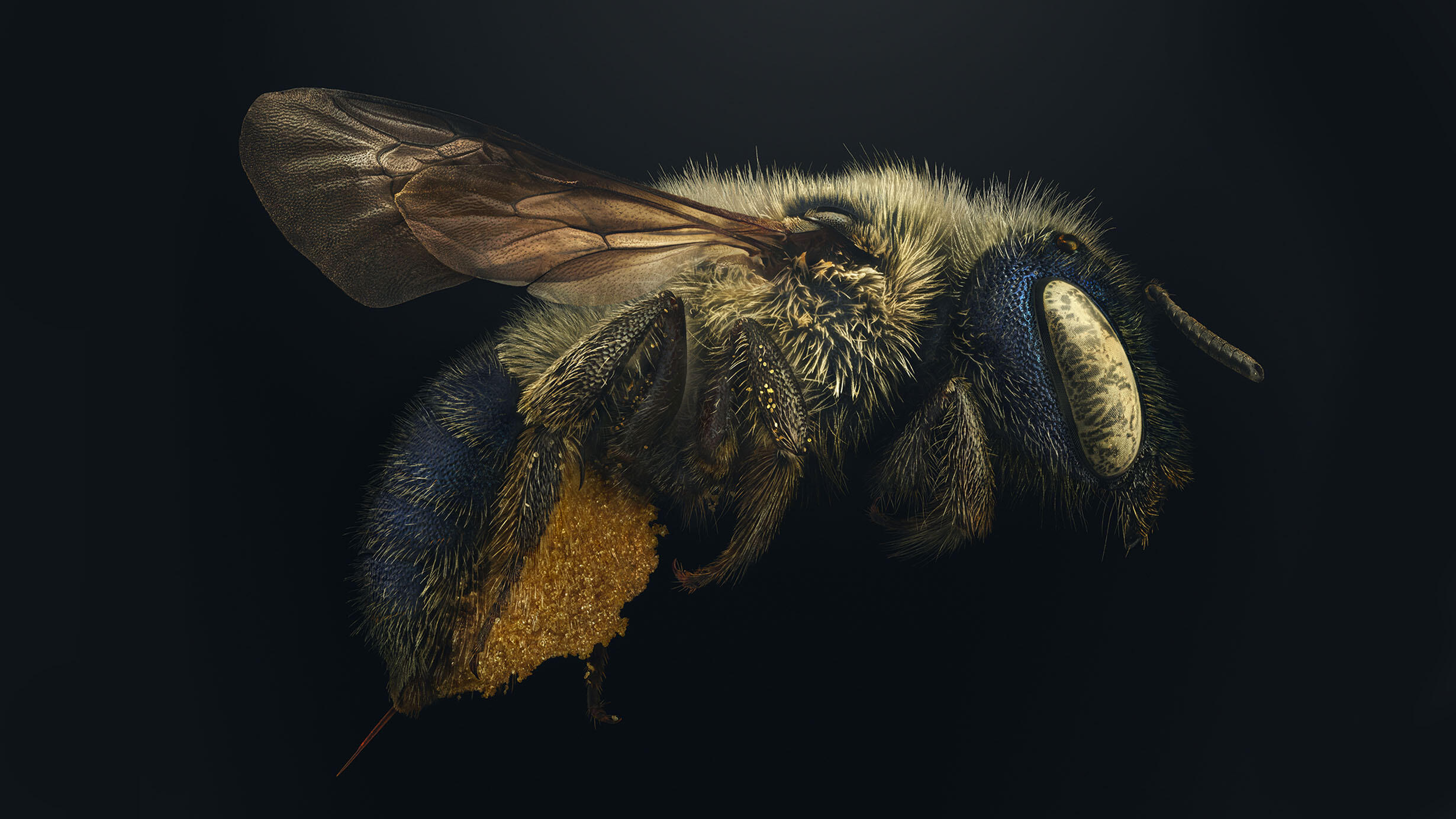AMNH Announces Extinct and Endangered: Insects in Peril
 The blue calamintha bee, Osmia calaminthae, relies on the pollen from two rare species of mint plants that live in Florida’s dwindling scrub regions. Researchers estimate the numbers of these blue bees may have dropped by as much as 90 percent.
The blue calamintha bee, Osmia calaminthae, relies on the pollen from two rare species of mint plants that live in Florida’s dwindling scrub regions. Researchers estimate the numbers of these blue bees may have dropped by as much as 90 percent.© Levon Biss
From bees to butterflies, insects help keep natural ecosystems healthy. But the evidence is clear: many insect species are in decline. A new exhibition opening at the American Museum of Natural History on June 22, 2022, Extinct and Endangered: Insects in Peril will introduce visitors to these tiny animals’ outsized impact on our planet through the uniquely powerful macrophotography of Levon Biss. The exhibition highlights 40 incredible but imperiled species, selected from specimens in the Museum’s world-class research collection, in large-format photographs as large as 4.5 by 8 feet, and will be on view in the Akeley Gallery and the adjacent East Galleria.
“We are delighted to showcase Levon Biss’s breathtaking photographs to engage, inspire, and educate our visitors about the critical need to conserve these glorious and diverse animals which, though small, are essential to Earth’s complex ecosystems,” said Ellen V. Futter, President of the American Museum of Natural History. “We look forward to further educating about insects when we open the spectacular Solomon Family Insectarium next year as part of the Gilder Center for Science, Education, and Innovation, which will also feature Biss’s stunning photography.”
The exhibition highlights the incredible importance of insects to ecosystems around the world, the risks they face as a result of human activities—including human-induced climate change—as well as ongoing work around the globe to protect insect populations. The photographs feature extinct and endangered specimens—some more than 100 years old—selected from the Museum’s vast scientific collection, highlighting the magnificence of insects in extreme detail, making intricate features visible and aiming to shift visitors’ perspective of the value and importance of the insect world. The featured species range from the well-known monarch butterfly and the nine-spotted ladybug to the remote Lord Howe Island stick insect of Australia, thought to be extinct for most of the 20th century until a tiny population was discovered and bred in captivity starting in 2003.
Each photograph in Extinct and Endangered takes about three weeks to create from up to 10,000 individual images shot using special lenses.
“There are two sides to this exhibition,” said Levon Biss. “There's the beauty and the celebration of these creatures. But there’s also a somberness, when you marvel at these insects and start to understand that they are already extinct, or close to being gone, and the reason for that is us, primarily. I hope people will walk away from this exhibition with a realization that these animals are too beautiful to be lost. They are too important to be lost.”
Insects are the most diverse group of animals on the planet, accounting for 80 percent of animal life on Earth. More than one million species have been named by scientists, and many more have yet to be discovered. Extinct and Endangered will sound an alarm and call attention to the critical issue of insect decline on a global level.
“Vertebrates are far better monitored and protected than most insects, a consequence of the fact that for most people insects are not just simply unknown but seriously misunderstood,” said David Grimaldi, the curator of Extinct and Endangered and a curator in the Museum’s Division of Invertebrate Zoology. “To a scientist concerned for all of nature, this focus on large animals is myopic. Take away the world’s mammals and the planet would not look much different; take away just the bees and other insect pollinators, the ants and termites, and life on land could collapse.”
The exhibition was developed along with a suite of companion products: a short video, digital interactive that will be on display in the gallery, and a lavish book, Extinct and Endangered, published by Abrams in Fall 2022 and featuring photography by Biss with a forward by Grimaldi.
A different selection of insect photographs by Biss also will be on view in the forthcoming Susan and Peter J. Solomon Family Insectarium, which will open as part of the Museum’s Richard Gilder Center for Science, Education, and Innovation in winter 2022-23 The 5,000-square-foot Solomon Family Insectarium will introduce visitors to the extraordinary diversity and importance of the insect world through live and pinned specimens as well as graphic and digital displays, oversized models of honeybees, a monumental model bee hive, one of the world’s largest displays of live leafcutter ants, and displays about the insects of New York City.
Extinct and Endangered: Insects in Peril is curated by David Grimaldi, curator in the Museum’s Division of Invertebrate Zoology and photographed by Levon Biss.
The exhibition is designed and produced by the American Museum of Natural History’s award-winning Exhibition Department under the direction of Lauri Halderman, vice president for exhibition.